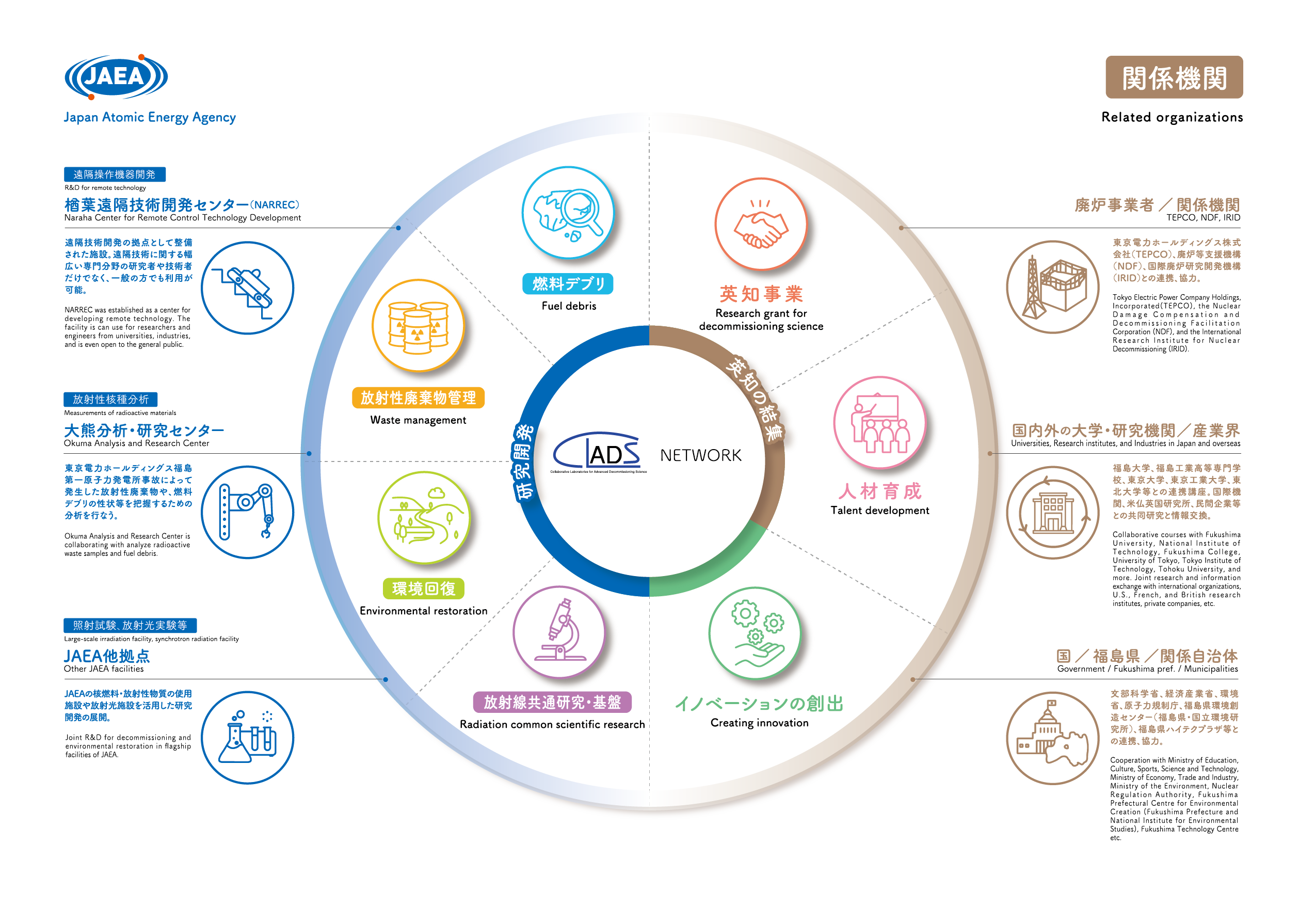
What is CLADS?
Research complex for restoration from the FDNPS accident

After the accident at the TEPCO's Fukushima Daiichi Nuclear Power Station (FDNPS), JAEA immediately dispatched employees to Fukushima Prefecture to conduct a range of key activities, such as environmental monitoring and decontamination demonstration projects. Based on these activities, JAEA established Collaborative Laboratories for Advanced Decommissioning Science (CLADS) in a Sector of Fukushima Research and Development in 2015. CLADS is a research entity that integrates research and development related to the decommissioning of the FDNPS, based on the "Mid-and-Long-Term Roadmap towards the Decommissioning of TEPC's Fukushima Daiichi Nuclear Power Station" and other guidelines. In April 2017, JAEA completed the “CLADS Main Building” (Tomioka town, Fukushima Pref.) as our core base, forming the center of a network that enables personnel from universities, research institutions, and industry in Japan and overseas to interact, while building a system that integrates R&D and human resource development through industry-academia-government collaborations. To further accelerate decommissioning and environmental restoration in an integrated manner, the Fukushima Environmental Safety Center (Miharu town, and Minamiaoma city) was integrated with CLADS in April 2020.
CLADS focuses on solving problems in four R&D areas: fuel debris, radioactive waste management, environmental restoration, and general radiation science. In addition, JAEA is developing the "Nuclear Energy Science & Technology and Human Resource Development Project (Mission H)", which supports talent develop ment in cooperation with universities and research institutes in Japan and abroad, and research related to decommissioning by researchers and engineers outside of JAEA. The results of these efforts are being used to create innovations for private sector use.
The “CLADS Main Building”, which is the core of CLADS and the focal point for international research and development, was established in the vicinity of the Fukushima Daiichi Nuclear Power Station. While forming a network for the interaction of human resources, at international and domestic universities, research institutions, and in the industry, we built a structure for promoting R&D and personnel nurturing jointly between the industry, academia, and government, in an integrated way, and we subsequently promoted decommissioning measures.
